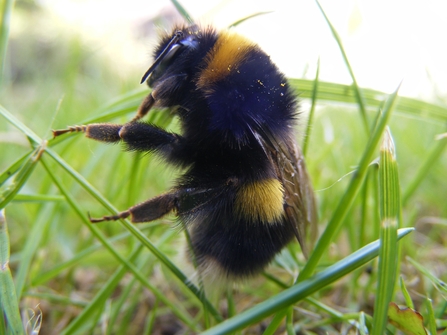With spring finally taking hold, there’s a buzz in the air – the buzz of lawn mowers zipping into life after an idle winter and the buzz of our early pollinators on the hunt for nectar. But, the two don’t go well together!
Our early pollinators are looking out for pollen and nectar for feeding – now is when they are most desperate for resources, so flowers in the lawn are a huge source of support. Bees are our most efficient pollinators and it really is in our interest to support their survival – just think about the fact that 75% of global crops are dependent upon animal pollination and you’ve got a strong reason why! In the East of England, of 228 bee species recorded, 73 species are threatened, regionally extinct or are of conservation concern. Habitat loss is one of the main causes for bee decline. One of the most critical habitats for bees, and other pollinating invertebrates, are wildflower meadows. Since the 1930’s we have lost a devastating 97% of our wildflower meadows across the UK. Just 0.5% of Hertfordshire is wildflower meadow today.




